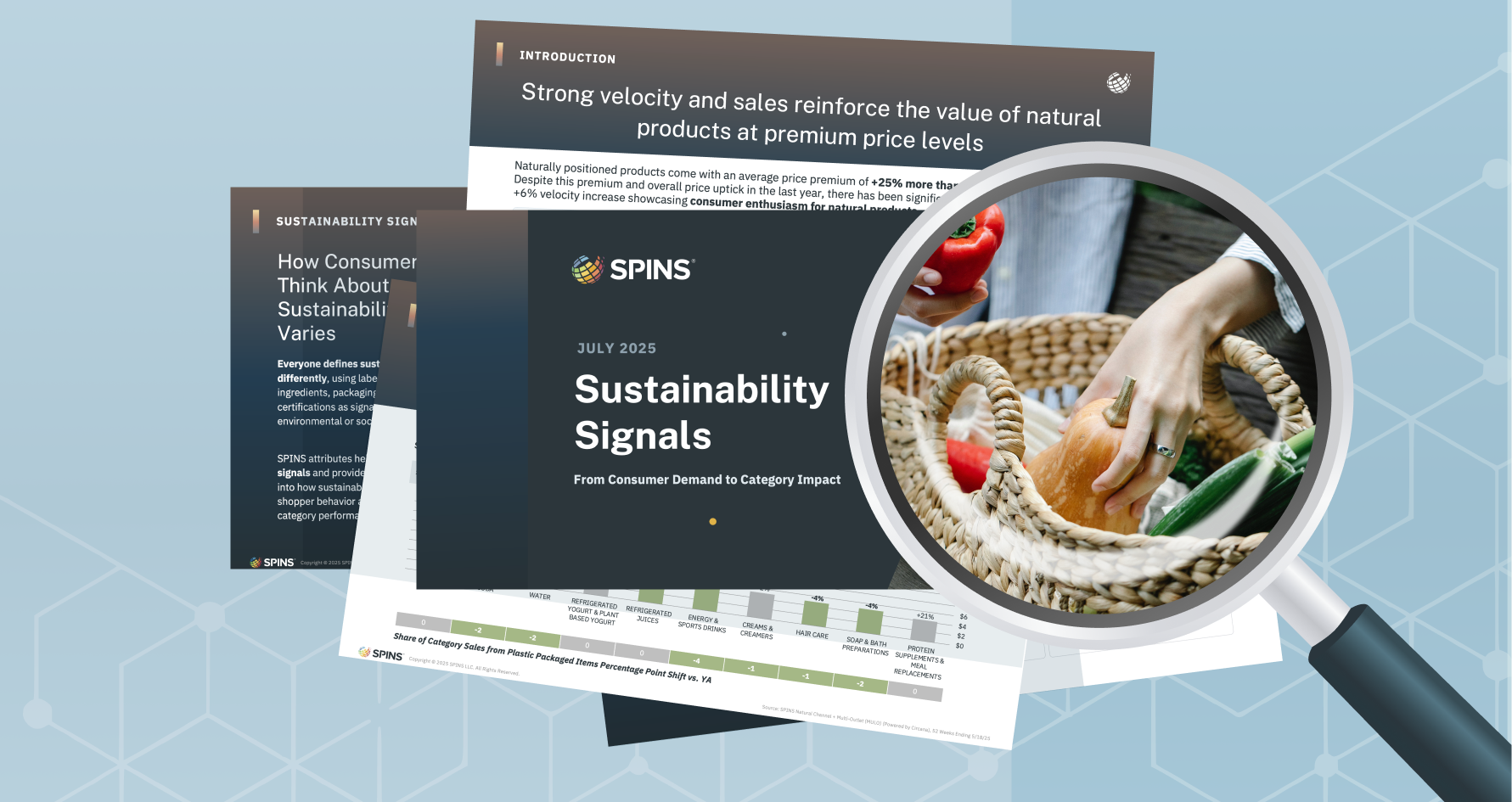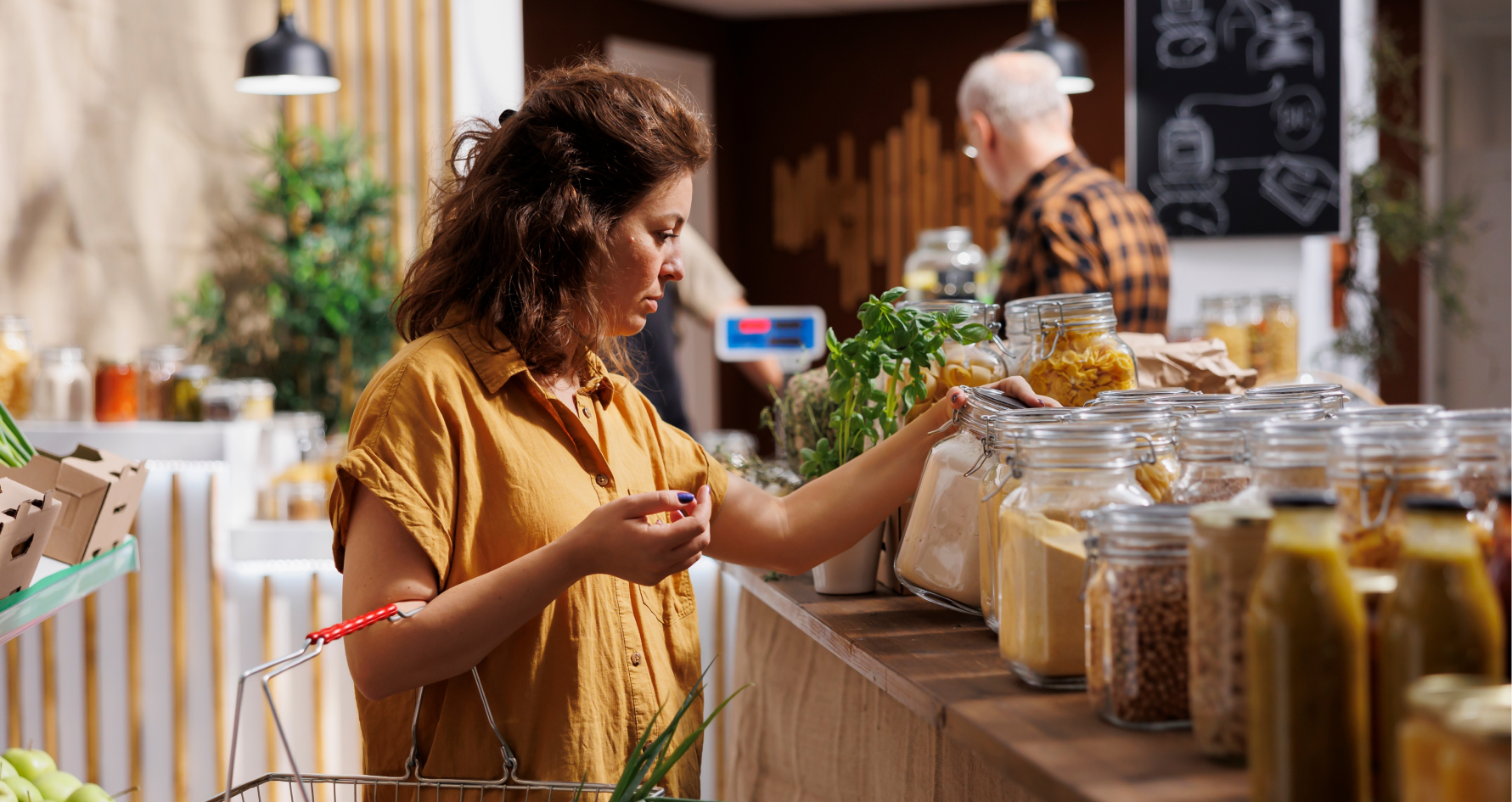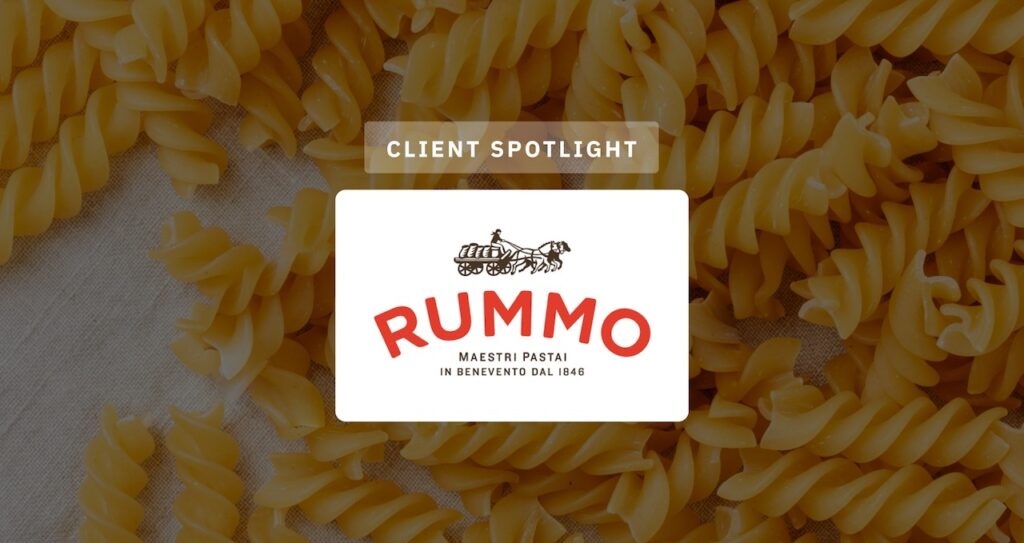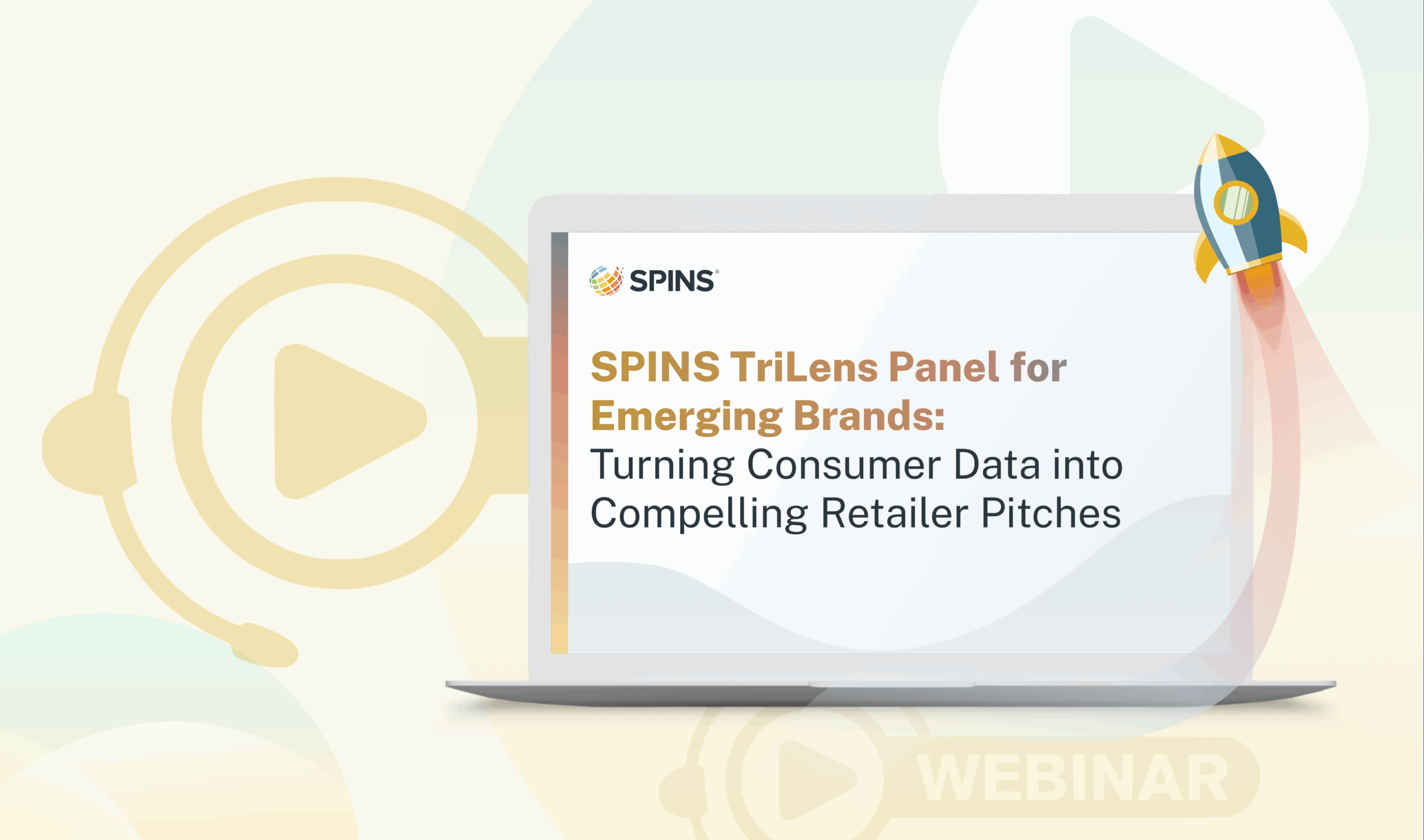Introduction
One of the fastest-growing certifications in the sustainability space is Certified Regenerative Organic (ROC), an emerging label that’s gaining traction among brands from startups to global enterprises.
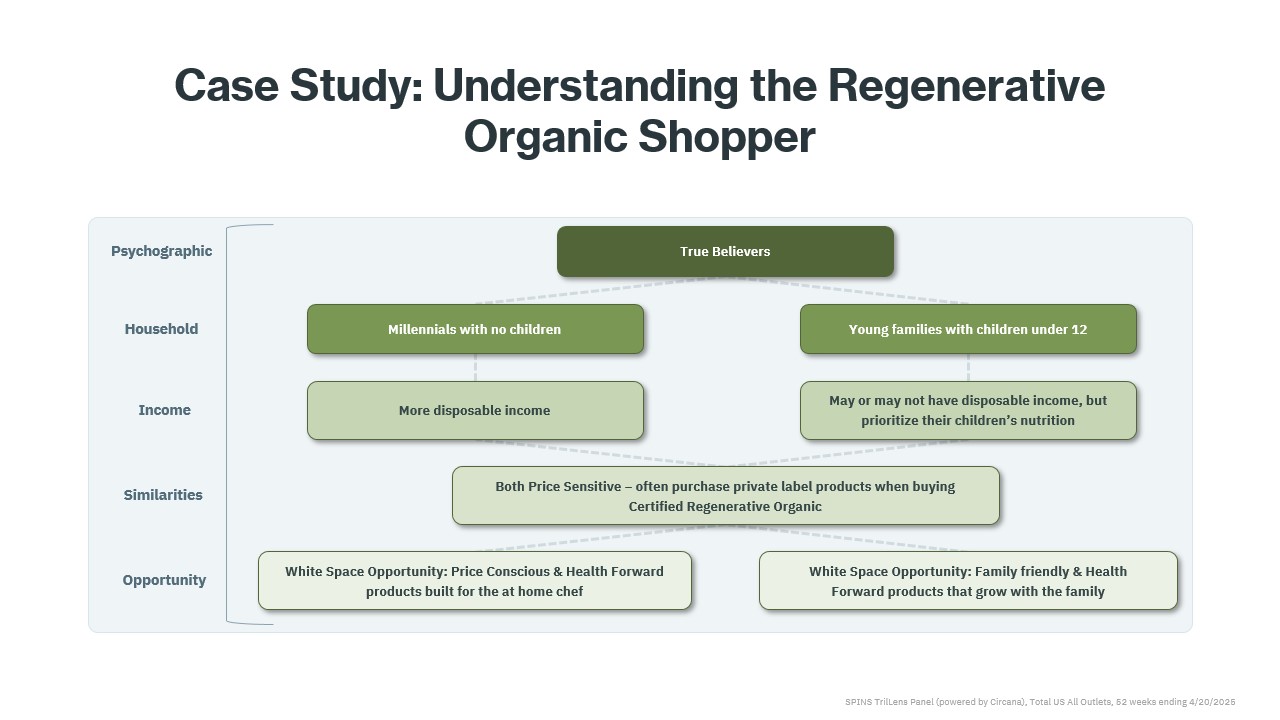
Seen as the next wave of “better-for-you” standards, ROC goes beyond organic by incorporating rigorous requirements for soil health, animal welfare, and social fairness. For CPG companies, understanding the regenerative shopper isn’t just about following a trend, it’s about engaging with a consumer segment that’s shaping the future of food and product innovation.
Understanding the Regenerative Organic Shopper
SPINS’ TriLens Panel data reveals that Certified Regenerative Organic (ROC) buyers are up 30% year over year. These shoppers predominantly align with the “True Believer” segment, driven by a commitment to health, the environment, and family well-being.
They split into two key groups:
- Millennials without children – Price-conscious, health-forward, and looking for pantry staples that fit their at-home lifestyle.
- Young families with children under 12 – Seeking family-friendly, health-forward products that can grow with their needs.
Both groups show price sensitivity, often choosing private label products, but they will make space in their basket for certified regenerative organic options when available. For brands, this presents white space opportunities: affordable, value-driven pantry items for single millennials, and evolving, family-oriented product lines for young parents.
Basket Affinity: What Else the Regenerative Shopper Buys
When ROC products make it into a cart, they’re rarely alone. Basket affinity analysis shows these shoppers are premium, high-frequency buyers who also purchase better-for-you and specialty staples, making them ideal targets for cross-promotion.
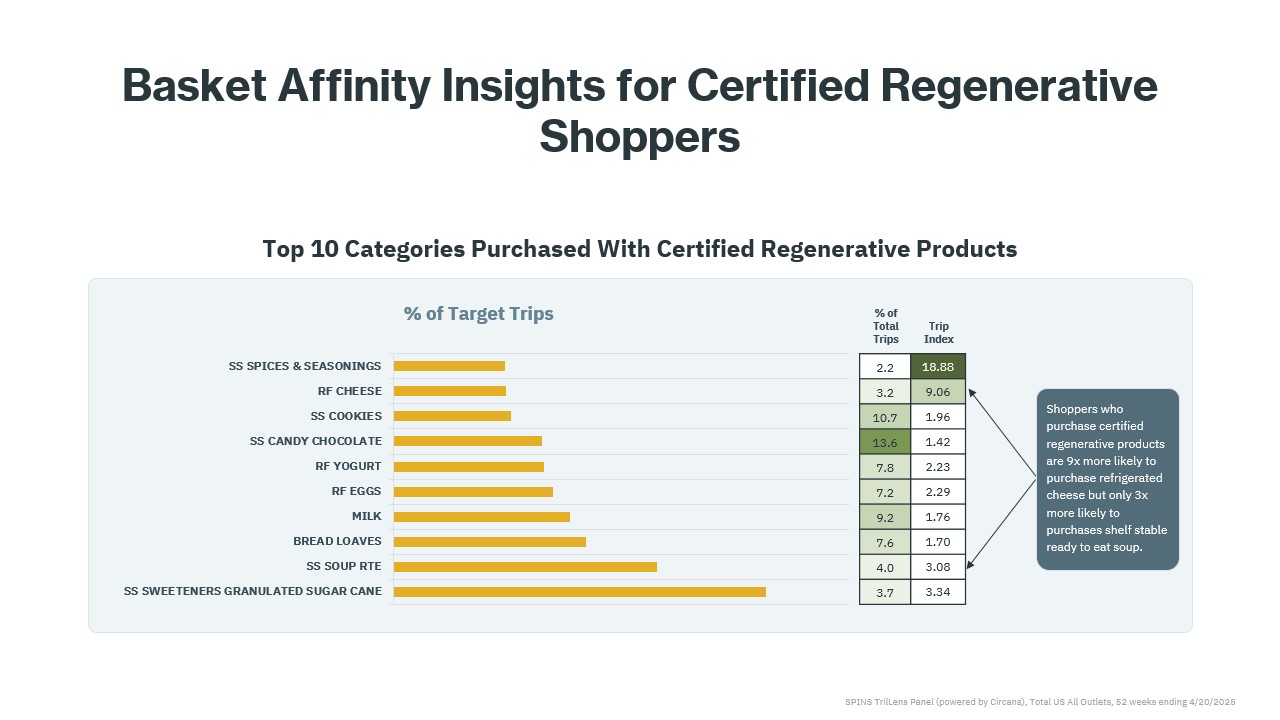
Top basket insights include:
- ROC buyers are 9x more likely to purchase refrigerated cheese.
- They are 3x more likely to purchase shelf-stable, ready-to-eat soup.
This mix signals both indulgence and convenience—two strong drivers for strategic promotions and product bundling.
Building Trust Through Layered Certifications
Certifications remain a cornerstone of consumer trust, with 85% of shoppers saying they trust third-party organizations to verify brand claims. ROC already shows impressive momentum, with 22% year-over-year dollar growth, outpacing many other high-performing certifications.
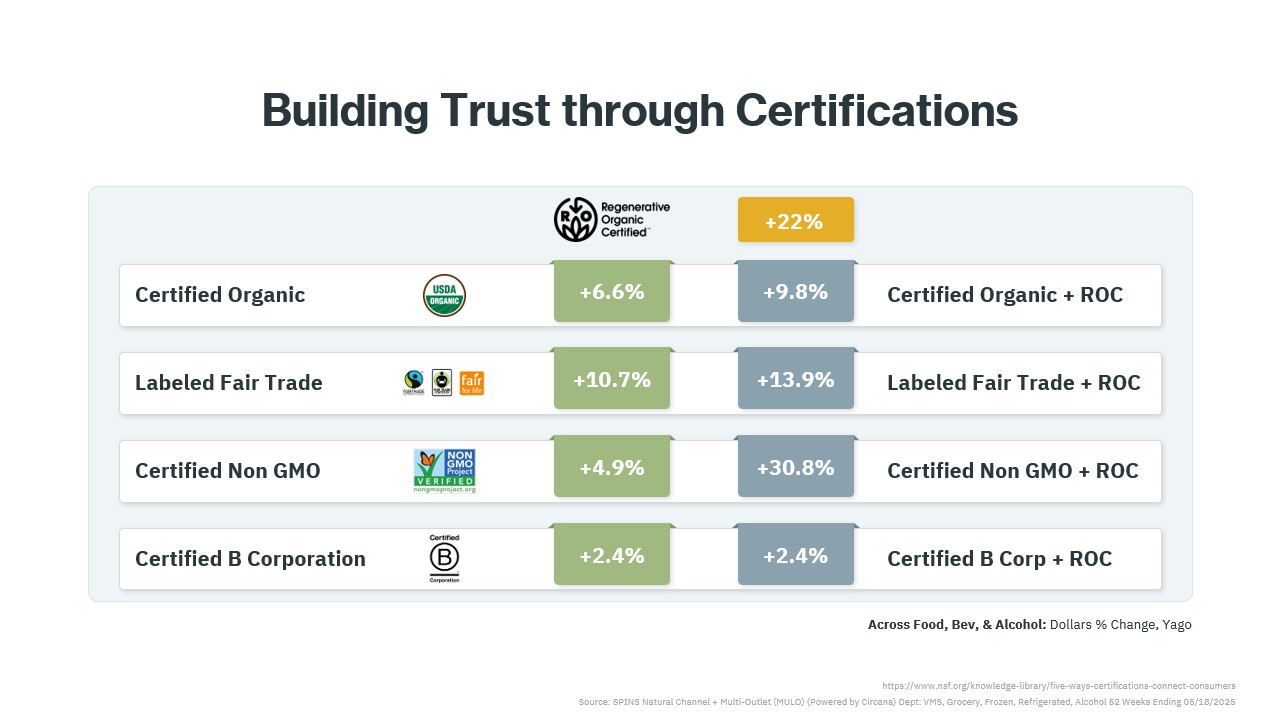
When paired with other trusted certifications, the results are even stronger. For example, ROC + Non-GMO Project Verified yields growth rates higher than ROC alone. Layering familiar and visually recognizable certifications boosts credibility, increases shopper confidence, and strengthens shelf appeal across categories.
The Path Forward: Meeting Values with Verifiable Action
As sustainability expectations rise, innovation will continue, but one principle remains constant: brands must align with consumer values through tangible, verified actions. Meeting demand requires more than storytelling; it calls for measurable proof points that shoppers can trust.
Certifications as a Roadmap for the Future
Over the years, certifications have evolved from niche endorsements to mainstream market drivers. USDA Organic, Non-GMO Project Verified, ROC, and Upcycled Certified are not only shaping consumer choice but also influencing how industries operate.

Each wave of certification builds on the last—addressing food safety, transparency, climate action, and now regenerative systems—creating a more values-aligned marketplace.
The lesson is clear: when consumers demand change, certifications respond, and the industry follows.
Three Levers for Building Trust & Driving Sustainable Change
To close the gap between consumer intent and actual purchase, brands and retailers can focus on three key areas:
1. Transparency
- Clarify claims and use simple, recognizable icons.
- Verify through third-party certifications.
- Educate shoppers on what terms like “regenerative” or “upcycled” mean.
2. Access
- Make sustainable products available at all price points.
- Use promotions, bundling, and loyalty programs to reduce trial barriers.
- Leverage private label lines to bring sustainable options to price-sensitive shoppers.
- Remove friction with affordable pack sizes, clear shelf signage, and easy placement.
3. Innovation
- Design for circularity, from sourcing to disposal.
- Invest in packaging, upcycling, and net-positive product formats.
- Lead with sustainability as a category differentiator and brand trust driver.
Final Takeaway
The sustainable shopper is no longer a niche demographic; they are influencing mainstream market dynamics, driving innovation, and rewarding brands that meet their expectations with loyalty and repeat purchases. By focusing on transparency, accessibility, and innovation, brands can bridge the gap between consumer intent and action, ensuring sustainability is not just a value proposition but a market advantage.


